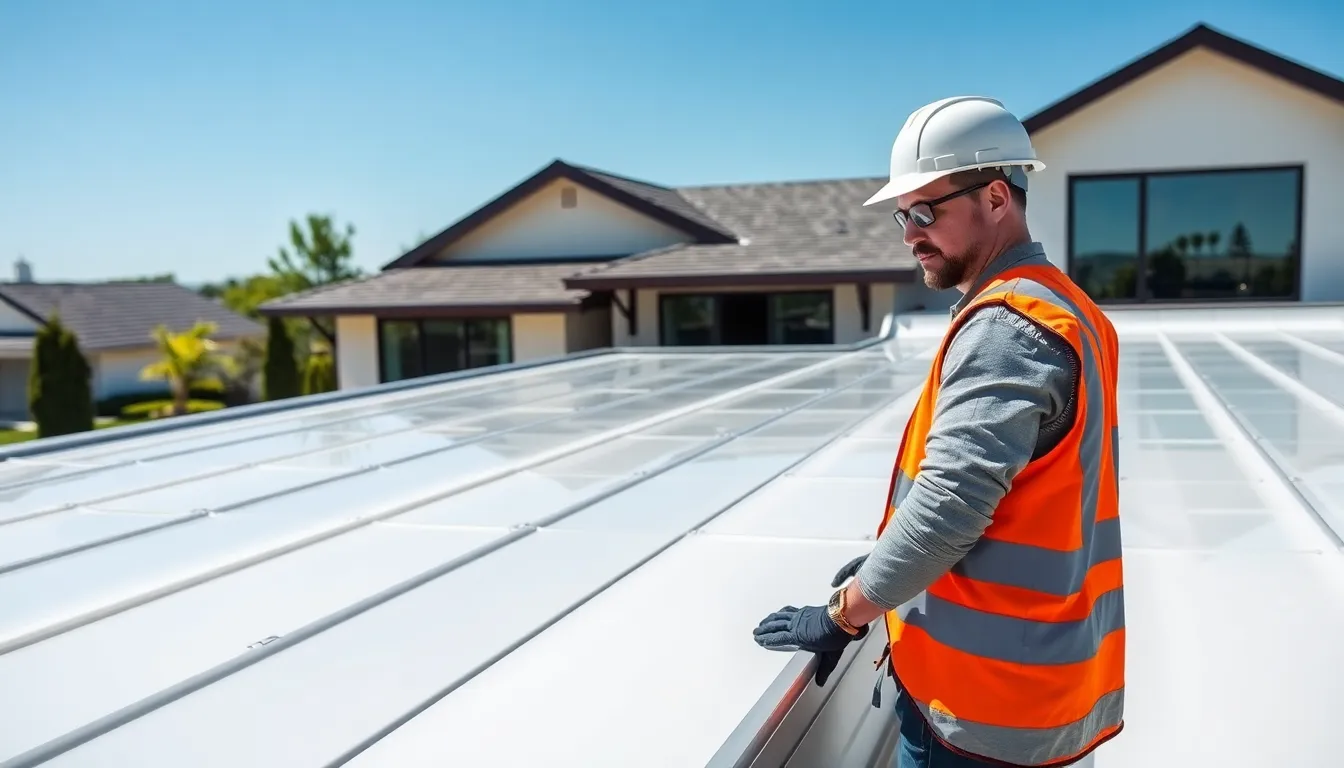When it comes to roofing, vinyl may not be the first material that springs to mind. Typically relegated to the realm of flooring and windows, vinyl is making a name for itself as a reliable roofing option. And why not? It’s durable, cost-effective, and frankly, incredibly versatile. Stick around as we jump into everything you need to know about vinyl roofing. Who knows? You might just find your next home upgrade in this unexpectedly captivating material.
Table of Contents
ToggleWhat Is Vinyl Roofing?

Vinyl roofing, as the name suggests, is a type of roofing material made primarily from polyvinyl chloride (PVC). Often found in the form of sheets or membranes, vinyl offers a waterproof barrier that protects structures from the elements. Unlike traditional roofing materials such as asphalt shingles or wood, vinyl roofing is less prone to weathering and provides a seamless installation that stands strong against leaks. Its lightweight nature makes it easy to handle during installation, ensuring reduced labor costs. Perhaps most importantly, the chemical composition of vinyl makes it resistant to UV light, preventing degradation over time, a factor that adds to its longevity and popularity.
Advantages of Vinyl Roofing
The benefits of vinyl roofing are compelling. To start, durability is a key feature. Vinyl roofs can last upwards of 20 years or more with proper care. They resist mold, mildew, and algae growth, which can be a game-changer in humid climates. Energy efficiency is another critical advantage. Vinyl roofing often comes in light-colored options that reflect sunlight, reducing heat absorption and later lowering energy costs. Let’s not forget about installation. It’s relatively straightforward, which means homeowners can enjoy quicker project completion and less hassle. Also, vinyl roofing is eco-friendly: it’s recyclable, and many manufacturers use up to 30% recycled materials in their products.”},{
Common Applications of Vinyl Roofing
Vinyl roofing shines in various scenarios. It is particularly popular for commercial buildings due to its robustness and low maintenance needs. Flat and low-slope roofs often benefit from vinyl’s waterproof properties, making it an ideal option for warehouses, retail stores, and schools. Residential applications are also on the rise. Homeowners increasingly turn to vinyl for garages, pool houses, and patios. Even some contemporary homes are adopting vinyl solutions for their roofs. On the aesthetic side, vinyl roofing can replicate the look of more traditional materials, giving homeowners an array of choices without sacrificing performance.
Installation Process of Vinyl Roofing
Installing vinyl roofing is a straightforward process, which typically follows a few essential steps. First, proper assessment of the roof is vital: any necessary repairs must be completed before installation begins. Once the surface is prepared, the installation can start. Vinyl sheets are rolled out or laid onto the roof’s surface, overlapping slightly to ensure a continuous barrier. Adhesives or mechanical fasteners help secure the sheets, with some installers opting for torch-down or heat-welded seams for added robustness. Finally, the edges are sealed to avoid any potential leaks. It’s worth noting that although DIY installation is possible, hiring professionals ensures that the job is completed correctly and efficiently.
Maintenance and Care for Vinyl Roofing
Maintaining vinyl roofing is relatively simple. Regular inspections are crucial for preventing potential issues like loose seams or buildup of debris. Cleaning the roof at least twice a year with a gentle soap solution can prevent algae and mold growth. It’s also wise to inspect gutters and downspouts periodically to ensure good water drainage. In case of damage, such as punctures or tears, prompt repair is necessary. Many homeowners opt to recoat their vinyl roofs every few years to protect against UV rays and extend lifespan. With minimal maintenance, vinyl roofs can retain their appearance and functionality for many years to come.
Cost Considerations and Budgeting
When budgeting for vinyl roofing, several factors come into play. Initial material costs for vinyl roofing are typically lower than those for traditional materials like slate or metal. Installation costs can also be lower due to the ease of handling and installation. Overall, homeowners can expect to pay between $3 to $6 per square foot, depending on the quality of the vinyl and specifics of the installation site. But, it’s essential to factor in long-term costs, such as lower energy bills and minimal maintenance expenses, when considering the total investment. In the long run, vinyl roofing often pays for itself.







